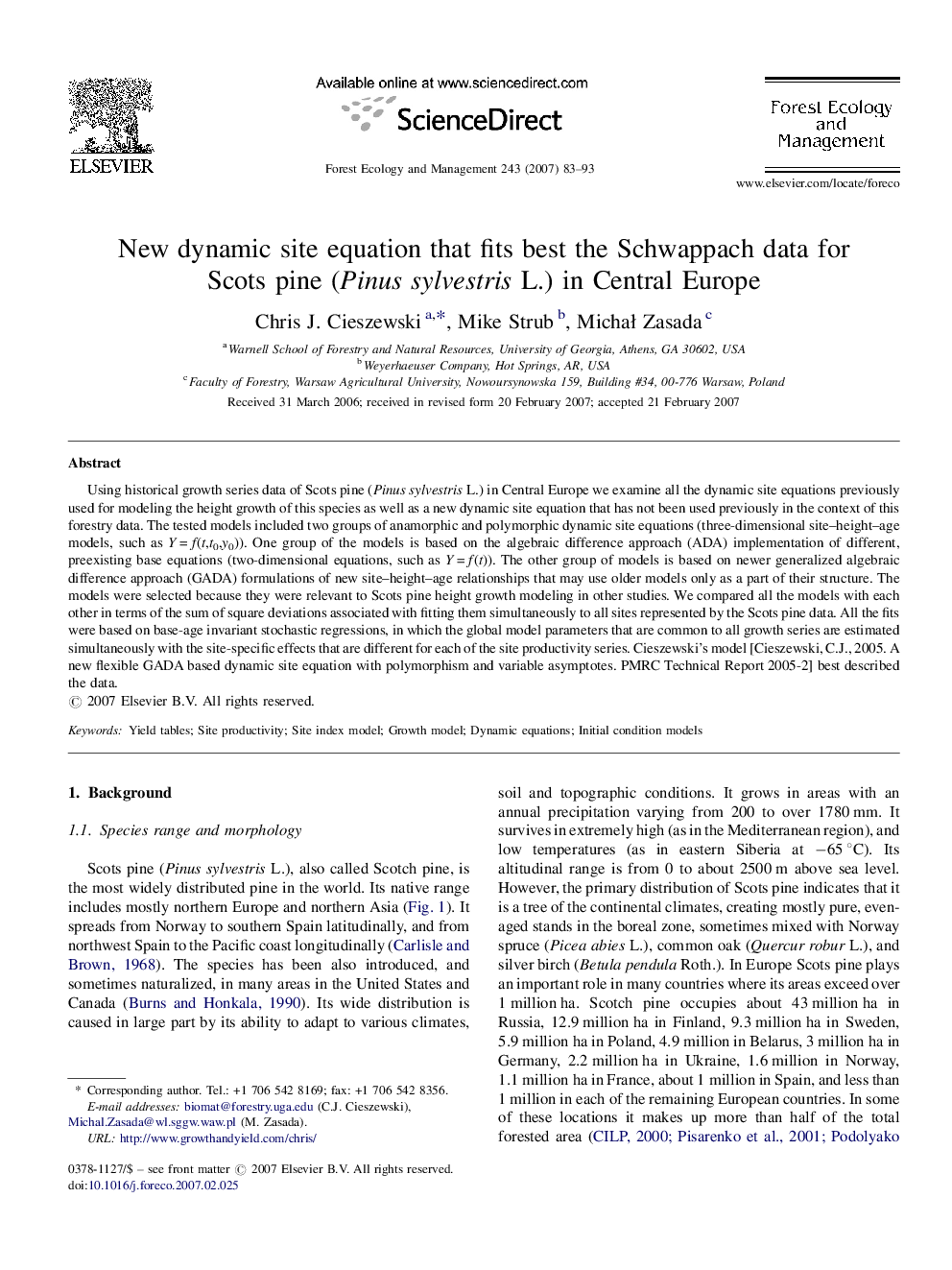| Article ID | Journal | Published Year | Pages | File Type |
|---|---|---|---|---|
| 90750 | Forest Ecology and Management | 2007 | 11 Pages |
Using historical growth series data of Scots pine (Pinus sylvestris L.) in Central Europe we examine all the dynamic site equations previously used for modeling the height growth of this species as well as a new dynamic site equation that has not been used previously in the context of this forestry data. The tested models included two groups of anamorphic and polymorphic dynamic site equations (three-dimensional site–height–age models, such as Y = f(t,t0,y0)). One group of the models is based on the algebraic difference approach (ADA) implementation of different, preexisting base equations (two-dimensional equations, such as Y = f(t)). The other group of models is based on newer generalized algebraic difference approach (GADA) formulations of new site–height–age relationships that may use older models only as a part of their structure. The models were selected because they were relevant to Scots pine height growth modeling in other studies. We compared all the models with each other in terms of the sum of square deviations associated with fitting them simultaneously to all sites represented by the Scots pine data. All the fits were based on base-age invariant stochastic regressions, in which the global model parameters that are common to all growth series are estimated simultaneously with the site-specific effects that are different for each of the site productivity series. Cieszewski's model [Cieszewski, C.J., 2005. A new flexible GADA based dynamic site equation with polymorphism and variable asymptotes. PMRC Technical Report 2005-2] best described the data.
